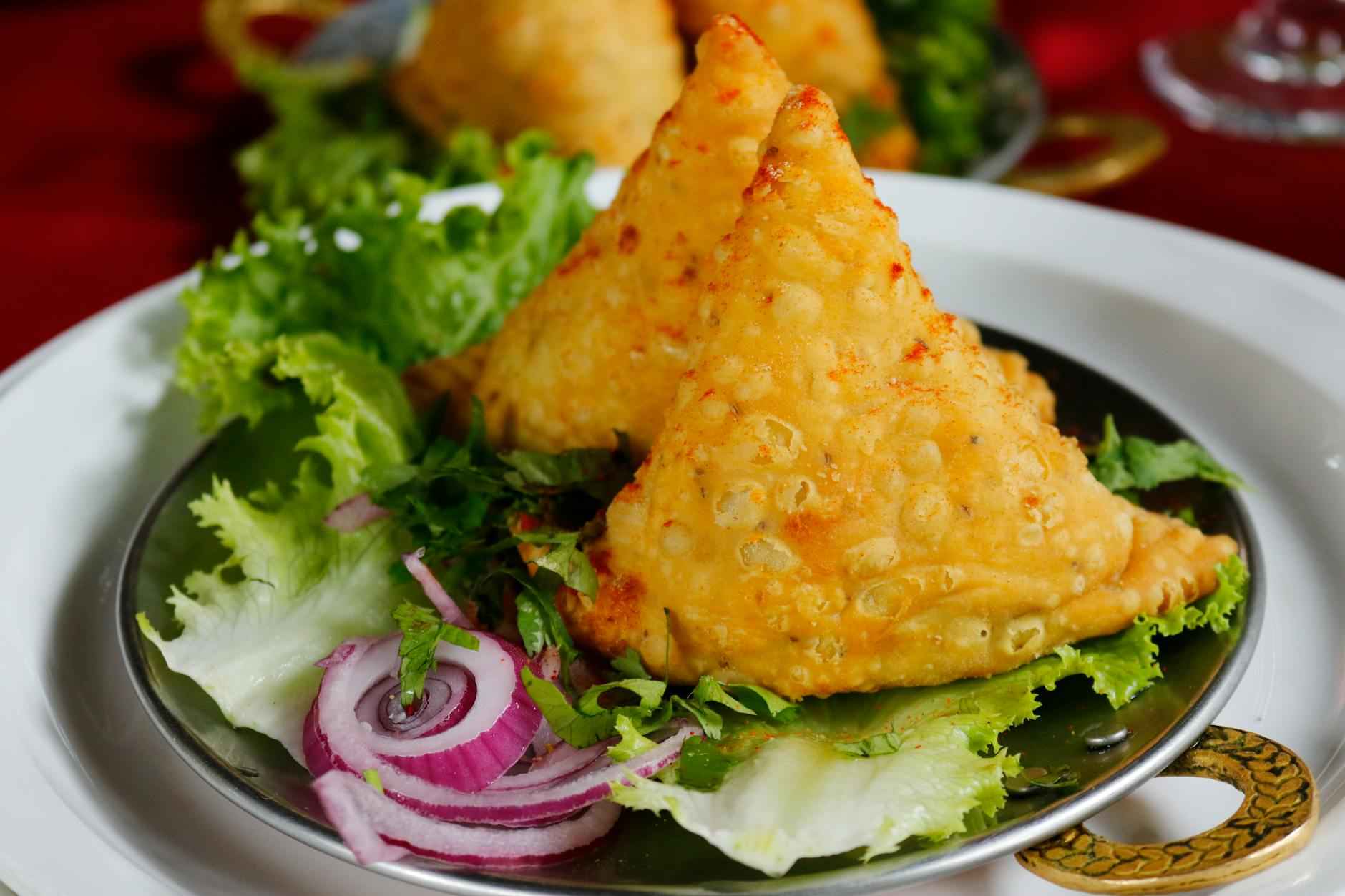This article explores the growing popularity of Indian cuisine in New York City, examining its cultural significance, diverse offerings, and the factors contributing to its rise in the culinary scene.
The Evolution of Indian Cuisine in New York
Indian cuisine has a rich history in New York, dating back to the 1960s when the first Indian restaurants began to appear. Over the decades, these establishments have evolved, adapting to the tastes and preferences of New Yorkers while maintaining the essence of traditional Indian flavors. The introduction of Indian cuisine was initially met with curiosity, but it quickly gained traction as people began to appreciate its diverse offerings. Today, Indian food is not just a niche but a significant part of the city’s culinary landscape.
Key Ingredients in Indian Cooking
The foundation of Indian cuisine lies in its remarkable variety of ingredients. Essential spices such as cumin, coriander, and turmeric are crucial in imparting the unique flavors that characterize Indian dishes. Herbs like cilantro and mint add freshness, while ingredients such as ghee and yogurt contribute to the richness of many recipes. The intricate balance of these components not only enhances the taste but also provides various health benefits, making Indian cuisine a favorite among health-conscious diners.
Popular Indian Dishes Gaining Traction
Among the myriad of dishes available, certain staples have captured the hearts of New Yorkers. Biryani, a fragrant rice dish, and butter chicken, known for its creamy tomato sauce, are just a couple of examples that have become household names. Other dishes like paneer tikka and dosa are also gaining popularity, appealing to both vegetarians and meat-lovers alike. The rich flavors and diverse textures of these dishes provide a culinary experience that resonates with a wide array of palates.
The Rise of Indian Food Trucks and Casual Dining
Food trucks and casual dining establishments have played a pivotal role in making Indian cuisine accessible to a broader audience. The vibrant food truck scene in New York has introduced innovative takes on traditional dishes, allowing people to enjoy Indian flavors on-the-go. Casual dining spots offer a relaxed atmosphere where patrons can explore various dishes without the formality of fine dining. This shift has contributed significantly to the mainstream acceptance of Indian food in the city.
Fusion Cuisine: Blending Cultures
Fusion cuisine has emerged as a popular trend, where Indian flavors are creatively blended with other culinary traditions. Dishes such as Indian tacos or butter chicken pizza showcase how chefs are experimenting with ingredients and techniques to create exciting new offerings. This blending of cultures not only broadens the appeal of Indian cuisine but also fosters culinary innovation, attracting a diverse clientele eager to try something new.
Health Benefits of Indian Spices
Indian cuisine is celebrated not only for its flavor but also for its health benefits. Spices like ginger, garlic, and cinnamon are known for their anti-inflammatory properties and their ability to boost metabolism. Turmeric, in particular, has gained recognition for its potential health benefits, including its role in reducing the risk of chronic diseases. As more diners become health-conscious, the nutritional advantages of Indian spices are drawing attention and interest.
Regional Variations in Indian Cuisine
India’s vast geography has given rise to a plethora of regional cuisines, each with its own unique flavors and cooking styles. From the rich, creamy dishes of Northern India to the spicy, tangy flavors of Southern cuisine, New Yorkers are increasingly curious about these diverse offerings. Restaurants specializing in regional dishes are making their mark, providing patrons with an authentic taste of India’s culinary diversity.
The Influence of Indian Restaurants on NYC’s Food Scene
Indian restaurants have significantly impacted New York’s food culture, influencing dining trends and expanding culinary horizons. They have introduced New Yorkers to a variety of spices and cooking techniques, enriching the city’s gastronomic landscape. As more people seek authentic and diverse dining experiences, Indian restaurants continue to thrive and shape the culinary narrative of the city.
Culinary Events Celebrating Indian Cuisine
Food festivals and culinary events play a crucial role in promoting Indian cuisine. Events such as the India Day Parade and various food festivals celebrate Indian culture and cuisine, drawing crowds eager to explore the flavors of India. These gatherings not only showcase traditional dishes but also highlight the creativity of chefs who are pushing the boundaries of Indian cooking.
Celebrity Chefs and Their Role in Popularizing Indian Cuisine
Celebrity chefs have played a significant role in bringing Indian cuisine to the forefront of the culinary world. Their innovative approaches and media presence have sparked interest and curiosity about Indian food. Through cookbooks, television shows, and social media, these chefs share their passion for Indian cuisine, inspiring a new generation of food lovers to explore its richness.
Challenges Faced by Indian Restaurants in NYC
Despite its popularity, Indian restaurants face unique challenges in New York. Competition is fierce, with numerous dining options available. Maintaining authenticity while catering to diverse tastes can be a balancing act for many chefs. Additionally, market saturation poses a risk for new establishments trying to make their mark in a crowded field.
Community and Cultural Significance of Indian Cuisine
Indian cuisine serves as a cultural bridge, fostering community ties and promoting cultural understanding among diverse populations in New York. It provides an opportunity for people to connect through food, sharing stories and experiences that transcend cultural boundaries. The communal aspect of dining is amplified in Indian culture, where meals are often enjoyed together, creating a sense of belonging and unity.
Future Trends for Indian Cuisine in New York
As culinary tastes evolve, Indian cuisine in New York is poised for continued growth. Trends such as sustainability, plant-based dishes, and innovative cooking techniques are likely to shape the future of Indian dining. Chefs are increasingly focusing on local ingredients and environmentally friendly practices, ensuring that Indian cuisine remains relevant and appealing to the modern diner.

The Evolution of Indian Cuisine in New York
Indian cuisine, rich in history and flavor, has undergone a remarkable transformation since its introduction to New York City. The journey began in the early 20th century when the first Indian immigrants brought their culinary traditions to the bustling streets of New York. Initially, these dishes were primarily enjoyed by the Indian community, but over the decades, the flavors of India have captivated the palates of New Yorkers from all walks of life.
In the 1960s and 1970s, the first wave of Indian restaurants began to emerge, primarily serving traditional dishes such as curry, tandoori, and naan. These establishments laid the groundwork for the appreciation of Indian cuisine in the city. However, it was not until the late 1990s and early 2000s that Indian food truly began to flourish in New York. The rise of globalization and an increasing interest in diverse culinary experiences allowed Indian cuisine to break through cultural barriers.
As Indian restaurants began to adapt to local tastes, they introduced a variety of fusion dishes that blended traditional Indian flavors with American favorites. This adaptation played a crucial role in expanding the audience for Indian food. For instance, dishes like butter chicken pizza and masala burgers became popular, appealing to a broader demographic while retaining essential Indian spices and cooking techniques.
Furthermore, the emergence of Indian food trucks has significantly contributed to the cuisine’s evolution in New York. These mobile kitchens offer a convenient way for busy New Yorkers to enjoy authentic Indian flavors on the go. With offerings like chicken tikka wraps and vegetable samosas, food trucks have made Indian cuisine more accessible than ever before. They often cater to the fast-paced lifestyle of city dwellers, providing quick yet flavorful meals that resonate with a diverse audience.
The cultural integration of Indian cuisine in New York is also reflected in the increasing number of culinary events and festivals celebrating Indian food. Events such as the New York City Diwali Festival and Indian Food Festival showcase the rich culinary heritage of India, attracting food enthusiasts and families alike. These gatherings not only highlight traditional dishes but also encourage a dialogue about the cultural significance of Indian cuisine, fostering a sense of community among attendees.
Moreover, the influence of celebrity chefs has played a pivotal role in popularizing Indian cuisine. Chefs like Vikram Sunderam and Rohit Gulati have brought innovative techniques and modern presentations to Indian cooking, making it more appealing to contemporary diners. Their establishments often feature a mix of traditional and modern dishes, showcasing the versatility of Indian cuisine while maintaining its authentic roots.
In summary, the evolution of Indian cuisine in New York is a testament to its adaptability and resilience. From humble beginnings to a culinary powerhouse, Indian food has carved out a significant niche in the city’s vibrant food scene. As it continues to evolve, one thing remains clear: Indian cuisine is here to stay, captivating the hearts and palates of New Yorkers for generations to come.

Key Ingredients in Indian Cooking
The essence of Indian cuisine is deeply rooted in its diverse ingredients. Each component plays a pivotal role in creating the rich, complex flavors that define this culinary tradition. From spices to herbs and other essential elements, the ingredients used in Indian cooking are not only fundamental to flavor but also to the cultural heritage that they represent.
Spices: The Heart of Indian Flavors
Spices are the backbone of Indian cooking, with each region of the country boasting its unique blend. Common spices include:
- Cumin: Known for its warm, earthy flavor, cumin is often used in curries and spice blends.
- Coriander: With its citrusy notes, coriander seeds and leaves add freshness to many dishes.
- Turmeric: This vibrant yellow spice not only imparts color but also offers numerous health benefits, including anti-inflammatory properties.
- Cardamom: Often referred to as the “queen of spices,” cardamom adds a sweet and aromatic flavor, commonly found in chai and biryani.
- Mustard seeds: These seeds provide a pungent flavor and are often used in tempering dishes.
Herbs: Freshness and Aroma
Alongside spices, fresh herbs play a crucial role in enhancing the flavors of Indian dishes. Notable herbs include:
- Cilantro: Known as coriander leaves in India, cilantro is used as a garnish and adds a fresh, zesty flavor to curries and salads.
- Mint: Often used in chutneys and raitas, mint adds a cooling effect that balances spicy dishes.
Legumes and Grains: The Nutritional Powerhouses
Indian cuisine also heavily incorporates legumes and grains, which are essential for providing protein and fiber. Staples include:
- Lentils: Varieties such as masoor, moong, and chana dal are fundamental in dishes like dal, offering both nutrition and flavor.
- Rice: A staple in many households, rice is often served with curries and biryanis, absorbing the rich flavors of the dishes.
- Wheat: Used to make various types of bread such as roti and naan, wheat is a primary source of carbohydrates in Indian diets.
Vegetables: A Colorful Palette
Vegetables not only add color but also enhance the nutritional profile of Indian dishes. Commonly used vegetables include:
- Potatoes: A versatile ingredient, potatoes are used in curries, snacks, and as a filling for various breads.
- Cauliflower: Often featured in dishes like aloo gobi, cauliflower absorbs spices beautifully.
- Spinach: Used in dishes like palak paneer, spinach is rich in iron and vitamins.
Conclusion
In summary, the key ingredients in Indian cooking are a testament to the country’s rich culinary heritage. The combination of spices, herbs, legumes, grains, and vegetables creates a tapestry of flavors that not only satisfies the palate but also nourishes the body. Understanding these components is essential for anyone looking to appreciate or replicate the vibrant and diverse world of Indian cuisine.

Popular Indian Dishes Gaining Traction
Indian cuisine has carved a significant niche in New York City’s diverse food landscape. Among the myriad of options available, certain dishes have emerged as favorites, captivating the taste buds of locals and tourists alike. This section delves into some of the most popular Indian dishes that are gaining traction in the city, exploring their unique flavors, cultural significance, and the reasons behind their widespread appeal.
- Biryani: A fragrant rice dish layered with marinated meat or vegetables, biryani is a beloved staple. Its origins can be traced back to the Mughal era, and it has evolved into various regional variations, each boasting distinct flavors. In New York, biryani is often served with raita, a yogurt-based side that complements its spices. The dish’s ability to satisfy diverse palates is a key factor in its popularity.
- Butter Chicken: Known for its creamy tomato sauce, butter chicken has become synonymous with Indian cuisine in the West. This dish combines tender pieces of chicken marinated in spices and yogurt, cooked in a rich and buttery sauce. Its mild flavor profile makes it accessible to those new to Indian food, contributing to its status as a favorite among non-Indian diners.
- Samosas: These crispy pastries filled with spiced potatoes, peas, or meat are a popular appetizer in Indian restaurants across New York. Samosas are often enjoyed with mint or tamarind chutney, adding a refreshing contrast to their savory filling. Their portability and shareable nature make them a go-to snack for many, especially during social gatherings.
- Tandoori Chicken: Marinated in yogurt and spices, tandoori chicken is cooked in a traditional clay oven, resulting in a smoky flavor and tender texture. This dish exemplifies the use of tandoor cooking, which is gaining popularity not just for its taste but also for its healthier cooking method. The vibrant color and aromatic spices make it visually appealing and a must-try for newcomers.
- Chaat: A street food favorite, chaat encompasses a variety of savory snacks that burst with flavor and texture. From the tangy and spicy flavors of pani puri to the sweet and savory notes of bhel puri, chaat is a celebration of Indian street food culture. Its versatility allows for endless variations, making it a popular choice for adventurous eaters.
- Palak Paneer: This vegetarian dish features paneer (Indian cottage cheese) cooked in a spiced spinach gravy. It is a great representation of how Indian cuisine caters to both vegetarians and meat lovers. The rich, vibrant green color of the dish is not only visually appealing but also packs a nutritional punch, making it a favorite among health-conscious diners.
The appeal of these dishes lies not only in their rich flavors and aromas but also in the cultural stories they tell. As Indian cuisine continues to gain traction in New York, it brings with it a sense of community and shared experience. Whether enjoyed at a high-end restaurant or a casual food truck, these dishes offer a taste of India that resonates with the diverse population of the city.
In conclusion, the growing popularity of Indian dishes in New York reflects a broader trend of culinary exploration and appreciation. As diners become more adventurous, they are increasingly drawn to the vibrant and diverse flavors that Indian cuisine has to offer. From the comfort of butter chicken to the excitement of chaat, these dishes are not just meals; they are a gateway to experiencing the rich tapestry of Indian culture.

The Rise of Indian Food Trucks and Casual Dining
In recent years, food trucks and casual dining establishments have emerged as significant players in the culinary landscape of New York City, particularly in popularizing Indian cuisine. This phenomenon has made Indian food more accessible to a wider audience, breaking down barriers that once limited its reach. The combination of convenience, affordability, and the vibrant flavors of Indian dishes has contributed to the growing popularity of these formats.
One of the most compelling aspects of food trucks is their ability to bring authentic Indian flavors to the streets of New York. With their mobility, these trucks can cater to diverse neighborhoods, introducing residents to traditional dishes like paneer tikka, chaat, and dosas. The casual nature of food trucks allows customers to experience Indian cuisine in a relaxed setting, often with a modern twist that appeals to younger generations. This accessibility has led to an increase in the number of food trucks offering Indian fare, creating a vibrant scene that attracts both locals and tourists alike.
Casual dining establishments have also played a crucial role in the rise of Indian cuisine. Many of these restaurants focus on providing a laid-back atmosphere where patrons can enjoy a variety of Indian dishes without the formality of traditional dining. This shift in dining culture aligns with the fast-paced lifestyle of New Yorkers, who often seek quick yet satisfying meal options. By offering thali platters, lunch specials, and shareable dishes, casual dining spots have made Indian food more appealing to a broader audience.
Furthermore, the fusion of Indian flavors with other cuisines has become a popular trend in both food trucks and casual dining settings. Chefs are experimenting with traditional Indian recipes, incorporating local ingredients and culinary techniques to create innovative dishes that resonate with a diverse clientele. For instance, Indian-inspired tacos or butter chicken pizza have gained traction, showcasing how Indian cuisine can adapt and thrive in a multicultural environment.
Social media has also played a pivotal role in the rise of Indian food trucks and casual dining. Platforms like Instagram and TikTok allow food enthusiasts to share their experiences, highlighting visually appealing dishes and unique dining experiences. This online exposure has not only increased the visibility of Indian cuisine but has also encouraged food truck owners and casual dining operators to innovate and engage with their audience more effectively.
Moreover, the affordability of food trucks and casual dining options makes Indian cuisine accessible to a wider demographic. Many food trucks offer meals at reasonable prices, allowing individuals and families to enjoy flavorful Indian dishes without breaking the bank. This economic aspect is particularly appealing in a city like New York, where dining out can often be expensive.
In summary, the rise of Indian food trucks and casual dining establishments has significantly contributed to the popularization of Indian cuisine in New York City. By providing accessible, affordable, and innovative dining options, these formats have made it easier for New Yorkers to explore and appreciate the rich flavors of India. As the culinary landscape continues to evolve, the influence of food trucks and casual dining on the perception and consumption of Indian cuisine is likely to grow, further enriching the city’s diverse food scene.

Fusion Cuisine: Blending Cultures
In the vibrant culinary landscape of New York City, fusion cuisine has emerged as a dynamic trend that captivates food enthusiasts. This innovative style of cooking marries elements from diverse culinary traditions, creating unique and exciting dishes that reflect a blend of cultures. One of the most notable examples of this trend is the integration of Indian flavors into American dishes, which has not only broadened palates but also fostered a deeper appreciation for global cuisines.
Indian cuisine is renowned for its rich tapestry of spices and flavors, which have found their way into various American culinary creations. Chefs are experimenting with traditional Indian ingredients, such as cumin, coriander, and turmeric, to elevate classic American dishes. For instance, the popular Indian-spiced burger features a patty infused with aromatic spices, topped with chutney and pickled onions, offering a delightful twist on a beloved favorite.
Another exciting fusion dish gaining traction is the butter chicken pizza. This inventive creation combines the creamy, spiced sauce of butter chicken with a classic pizza crust, merging two culinary worlds into a single, flavorful experience. The result is a dish that not only satisfies cravings but also showcases the versatility of Indian cuisine.
How Are Indian Flavors Transforming American Dishes?
- Flavor Profiles: Indian cuisine is characterized by its complex flavor profiles, often achieved through the use of a variety of spices. This complexity is now being infused into American comfort foods, creating dishes that are both familiar and exotic.
- Ingredient Innovation: Chefs are increasingly incorporating traditional Indian ingredients into American recipes, such as using paneer in quesadillas or masala in barbecue sauces, leading to a new wave of culinary creativity.
- Health Consciousness: The health benefits associated with Indian spices, such as anti-inflammatory properties of turmeric, have prompted chefs to explore their use in health-focused dishes, appealing to a more health-conscious audience.
The fusion of Indian and American cuisines not only reflects a culinary evolution but also symbolizes the cultural blending that characterizes New York City. As diverse communities come together, their culinary traditions intermingle, resulting in dishes that tell stories of heritage and innovation. Food festivals and pop-up restaurants celebrating this fusion are becoming increasingly popular, providing platforms for chefs to showcase their creativity and for diners to explore new flavors.
What Does the Future Hold for Fusion Cuisine?
As the culinary scene continues to evolve, the future of fusion cuisine looks promising. With the rise of social media and food blogs, chefs are more motivated than ever to experiment with flavors and techniques from different cultures. This trend is likely to foster even more innovation in the kitchen, leading to new and exciting dishes that challenge traditional culinary boundaries.
In conclusion, the integration of Indian flavors into American cuisine exemplifies the essence of fusion cooking. It not only enhances the dining experience but also encourages cultural exchange and understanding. As food lovers continue to seek out unique flavors and experiences, the fusion of Indian and American cuisines is set to thrive, making it an exciting time for culinary exploration in New York City.

Health Benefits of Indian Spices
Indian cuisine is renowned for its vibrant flavors, but what many may not realize is the significant health benefits that accompany the use of its spices. These spices are not just flavor enhancers; they are also packed with nutrients and medicinal properties that can contribute to overall well-being. In this section, we will explore some of the key spices commonly used in Indian cooking and their associated health benefits.
- Turmeric: Known for its bright yellow color, turmeric contains curcumin, a powerful anti-inflammatory and antioxidant compound. Research suggests that curcumin can help fight chronic inflammation and may lower the risk of heart disease and cancer.
- Cumin: This spice is rich in iron and has been shown to aid digestion. Cumin may also help improve cholesterol levels and has antimicrobial properties, making it beneficial for gut health.
- Coriander: Both the seeds and leaves of coriander are used in Indian cooking. Coriander is known for its ability to lower blood sugar levels and has anti-inflammatory properties. It also contains antioxidants that can combat oxidative stress in the body.
- Ginger: A staple in Indian kitchens, ginger is well-known for its digestive benefits. It can help alleviate nausea, reduce muscle pain, and has anti-inflammatory effects. Ginger is also beneficial for respiratory health and may help in reducing cholesterol levels.
- Cardamom: Often referred to as the “queen of spices,” cardamom has been shown to possess anti-inflammatory and antioxidant properties. It may also help improve oral health and has been linked to better digestive health.
- Black Pepper: This common spice contains piperine, which enhances nutrient absorption and has been linked to improved digestion. Black pepper also possesses antioxidant properties and may contribute to weight loss by boosting metabolism.
- Fenugreek: Known for its slightly bitter taste, fenugreek seeds are high in soluble fiber, which can help control blood sugar levels. They are also beneficial for lactating mothers, as they may help increase milk production.
Incorporating these spices into your meals not only enhances flavor but also adds a layer of nutritional value. The combination of these spices in typical Indian dishes creates a powerhouse of health benefits that can support various bodily functions. For instance, a traditional curry made with turmeric, cumin, and ginger can be a delicious way to boost your immune system, improve digestion, and even reduce inflammation.
Moreover, the health benefits of Indian spices extend beyond individual consumption. The rising awareness of these benefits has led to an increase in the popularity of Indian cuisine among health-conscious individuals. Many restaurants in New York are now highlighting the health aspects of their dishes, appealing to a demographic that seeks both flavor and wellness in their food choices.
In conclusion, the health benefits of Indian spices are substantial and varied. By embracing these spices, not only do we enjoy the rich and diverse flavors of Indian cuisine, but we also promote better health and well-being. As the culinary landscape continues to evolve, the integration of these spices into everyday cooking can provide a holistic approach to nutrition.

Regional Variations in Indian Cuisine
India’s culinary landscape is as varied and vibrant as its geography. The country’s vast expanse encompasses a multitude of regions, each contributing its own unique flavors, ingredients, and cooking techniques. This rich tapestry of regional cuisines is now making a significant impact on New York’s culinary scene, introducing residents to a diverse array of dishes that reflect the cultural heritage of India.
- North Indian Cuisine: Known for its robust flavors and rich gravies, North Indian cuisine features dishes like biryani, butter chicken, and paneer tikka. The use of spices such as cumin, coriander, and garam masala is prevalent, creating a warm and hearty dining experience. In New York, many restaurants offer these traditional dishes, often accompanied by naan or roti.
- South Indian Cuisine: Characterized by its emphasis on rice and lentils, South Indian cuisine brings dishes like dosa, idli, and sambar to the forefront. The flavors are often lighter, with a focus on coconut and tamarind. In New York, the rise of South Indian eateries has introduced many to the unique experience of enjoying a traditional thali, which showcases a variety of dishes on a single platter.
- East Indian Cuisine: The eastern states, particularly West Bengal, are famous for their fish dishes and sweets. Items like machher jhol (fish curry) and rosogolla (sweet cheese balls) are beloved. In New York, Bengali restaurants are becoming increasingly popular, offering a taste of the region’s culinary delights that celebrate the rich aquatic resources of the Bay of Bengal.
- West Indian Cuisine: The vibrant flavors of West Indian cuisine are highlighted by the use of spices, herbs, and a variety of meats. Dishes like vindaloo from Goa and dhokla from Gujarat showcase the region’s culinary diversity. New York’s food scene has embraced these flavors, with many restaurants specializing in the fiery and aromatic dishes of this region.
The regional variations in Indian cuisine not only provide a feast for the palate but also tell stories of the people and cultures that have shaped them. Each dish reflects the history, geography, and traditions of its origin, making Indian cuisine a rich subject for exploration.
As New Yorkers continue to embrace the diverse offerings of Indian food, the influence of these regional cuisines is evident in food festivals, pop-up restaurants, and culinary events that celebrate the vibrant flavors of India. The growing interest in authentic regional dishes is paving the way for a deeper appreciation of the cultural significance behind each meal.
In conclusion, the regional variations in Indian cuisine are a testament to India’s rich cultural heritage. From the spicy curries of the north to the delicate flavors of the south, each region brings something unique to the table. As these diverse cuisines continue to gain traction in New York, they are not only enriching the culinary landscape but also fostering a greater understanding and appreciation of India’s cultural diversity.

The Influence of Indian Restaurants on NYC’s Food Scene
How Indian Restaurants are Shaping NYC’s Culinary LandscapeIndian restaurants have become a vibrant part of New York City’s culinary tapestry, significantly influencing dining trends and the overall food culture. The integration of Indian cuisine into the diverse gastronomic scene of NYC reflects a broader acceptance and appreciation of global flavors. This section explores the various ways in which Indian restaurants are impacting the city’s food landscape, highlighting their role in shaping culinary preferences, introducing innovative dining experiences, and fostering cultural exchange.
Indian restaurants in New York are not just serving food; they are introducing authentic flavors and culinary traditions that resonate with a diverse audience. The rise of Indian cuisine has led to a shift in dining trends, where consumers are increasingly seeking out authentic culinary experiences. The popularity of dishes like paneer tikka and masala dosa reflects a growing interest in traditional Indian cooking methods and ingredients.
Additionally, many Indian restaurants are embracing modern dining concepts, such as family-style sharing and tasting menus, which cater to the evolving preferences of NYC diners. This trend not only enhances the dining experience but also encourages patrons to explore a variety of dishes in one sitting, fostering a deeper appreciation for the complexity of Indian cuisine.
Indian restaurants are also at the forefront of culinary innovation, often blending traditional recipes with contemporary culinary techniques. This fusion has led to the emergence of modern Indian cuisine, where chefs experiment with flavors and presentation, creating visually stunning dishes that appeal to the Instagram generation. For instance, the rise of deconstructed curries and spiced cocktails showcases how Indian flavors can be reimagined while maintaining their essence.
Moreover, the introduction of food trucks and casual dining options has made Indian cuisine more accessible to a broader audience. These informal dining settings allow patrons to enjoy Indian flavors in a relaxed atmosphere, breaking down barriers and inviting more people to experience this rich culinary tradition.
Indian restaurants are not only contributing to the culinary landscape but also serving as cultural hubs within New York City. Many establishments host events that celebrate Indian festivals, music, and art, creating a space for cultural exchange. These events not only attract food enthusiasts but also foster a sense of community among diverse populations, bridging cultural gaps through shared culinary experiences.
Furthermore, the presence of Indian restaurants in various neighborhoods has encouraged local communities to embrace and celebrate their multicultural identities. By participating in community events and collaborating with local organizations, these restaurants play a pivotal role in promoting cultural understanding and appreciation.
As the demand for sustainable dining options grows, many Indian restaurants are adapting their practices to align with this trend. By sourcing local ingredients and implementing eco-friendly practices, they are setting an example for other culinary establishments in NYC. This commitment to sustainability not only enhances the quality of the food served but also appeals to environmentally conscious consumers.
In conclusion, Indian restaurants are making a profound impact on New York City’s food scene, influencing dining trends, creating innovative experiences, and fostering cultural exchange. Their unique ability to blend tradition with modernity, while remaining committed to authenticity, positions them as key players in the ever-evolving culinary landscape of NYC.

Culinary Events Celebrating Indian Cuisine
Indian cuisine is not just about the food; it’s a celebration of culture, tradition, and community. In New York City, a melting pot of cultures, culinary events and food festivals play a pivotal role in promoting Indian cuisine. These events not only showcase the rich flavors and diverse offerings of Indian food but also foster a deeper understanding of its cultural significance. Here, we explore some of the key events that highlight Indian culinary traditions in the Big Apple.
- New York City Diwali Festival: Celebrating the Festival of Lights, this annual event features a vibrant array of Indian food stalls, cooking demonstrations, and cultural performances. Visitors can indulge in traditional sweets like gulab jamun and jalebi, while also enjoying savory dishes such as samosas and chole bhature. The festival not only promotes Indian cuisine but also educates attendees about the significance of Diwali in Indian culture.
- India Day Parade: Held every August, this parade is a grand celebration of India’s independence. Alongside the colorful floats and cultural performances, various food vendors set up stalls offering authentic Indian dishes. From tandoori chicken to paneer tikka, the parade provides a platform for local Indian restaurants to showcase their culinary talents to a diverse audience.
- Taste of India: This food festival brings together some of the best Indian restaurants in New York, allowing attendees to sample a variety of dishes under one roof. The event often features cooking competitions and demonstrations by renowned chefs, providing insights into traditional cooking techniques and modern interpretations of Indian cuisine. It’s a must-visit for food enthusiasts and those looking to explore the depths of Indian flavors.
- Brooklyn Indian Food Festival: This festival highlights the culinary diversity found in the Indian subcontinent, featuring regional specialties from various states of India. Attendees can experience everything from Kerala’s seafood curries to Punjabi butter chicken. The festival also includes live music and dance performances, creating a festive atmosphere that celebrates Indian culture.
These culinary events serve as vital platforms for promoting Indian cuisine, allowing chefs and restaurateurs to connect with the community and share their passion for food. They also create opportunities for cultural exchange, where New Yorkers can learn about the traditions and history behind the dishes they enjoy. The growing interest in Indian cuisine at these events reflects a broader trend of cultural appreciation and culinary exploration in the city.
Moreover, these festivals often incorporate workshops and interactive sessions, where participants can learn to cook popular Indian dishes or understand the significance of various spices used in Indian cooking. This hands-on approach not only enhances the experience but also helps demystify Indian cuisine for those unfamiliar with it.
In conclusion, food festivals and culinary events in New York City play a crucial role in celebrating and promoting Indian cuisine. They provide a vibrant space for cultural exchange, education, and community building, ensuring that the flavors and traditions of India continue to thrive in this dynamic city.

Celebrity Chefs and Their Role in Popularizing Indian Cuisine
Celebrity chefs have become pivotal figures in the culinary world, and their influence on Indian cuisine is particularly noteworthy. Their ability to blend tradition with modernity has not only elevated the status of Indian food but also made it accessible to a broader audience. This section delves into the impact that these culinary icons have had on shaping perceptions and increasing interest in Indian cuisine.
In recent years, celebrity chefs have emerged as powerful advocates for Indian cuisine, showcasing its richness and diversity through various media platforms. Television shows, cookbooks, and social media have become key avenues for these chefs to share their passion for Indian food. By introducing innovative recipes and modern presentation styles, they have made traditional dishes more appealing to a global audience.
For instance, chefs like Vikas Khanna and Padma Lakshmi have played a crucial role in bringing Indian flavors to mainstream culinary discussions. Their appearances on popular cooking shows have not only highlighted the authenticity of Indian dishes but also educated viewers on the cultural significance behind them. This has led to an increased appreciation for regional variations and lesser-known dishes, encouraging food enthusiasts to explore the vast landscape of Indian cuisine.
Celebrity chefs often experiment with fusion cuisine, blending Indian flavors with elements from other culinary traditions. This approach has resulted in the creation of dishes that appeal to contemporary palates while respecting traditional roots. For example, the use of Indian spices in gourmet burgers or the incorporation of curry flavors into pasta dishes has captured the interest of food lovers.
Such innovations have not only made Indian cuisine more approachable but have also sparked curiosity among those who may have previously been unfamiliar with it. The emphasis on visual presentation and modern plating techniques has further enhanced the appeal, making Indian dishes not only delicious but also Instagram-worthy.
Beyond just cooking, celebrity chefs are also involved in educational initiatives that promote cultural awareness. Many of them host workshops and cooking classes that focus on the intricacies of Indian cooking. These events often explore the history and cultural significance of various spices and techniques, fostering a deeper understanding of Indian cuisine.
Moreover, their participation in food festivals and culinary events has helped to create a vibrant community around Indian food. These gatherings not only showcase the talents of various chefs but also provide a platform for cultural exchange, allowing attendees to experience the rich tapestry of Indian culinary traditions firsthand.
The influence of celebrity chefs extends to the restaurant industry as well. Many Indian restaurants are now adopting modern concepts and innovative menus inspired by these culinary icons. This shift has resulted in a more dynamic dining experience that appeals to a wider demographic, including younger generations who are eager to explore diverse cuisines.
As a result, traditional Indian restaurants are evolving to incorporate contemporary elements, such as open kitchens and interactive dining experiences. This transformation is crucial for attracting new customers and retaining interest in Indian cuisine amidst a competitive food landscape.
In conclusion, the role of celebrity chefs in popularizing Indian cuisine is multifaceted and impactful. Through their innovative approaches, educational efforts, and influence on restaurant trends, they have significantly shaped perceptions and increased interest in Indian food. As these culinary icons continue to champion the flavors of India, the cuisine’s prominence in the global culinary scene is set to grow even further.

Challenges Faced by Indian Restaurants in NYC
Despite the growing popularity of Indian cuisine in New York City, restaurants specializing in this vibrant culinary tradition encounter a range of unique challenges that can hinder their success. From fierce competition to the quest for authenticity, these hurdles require innovative solutions and strategic planning. This section delves into the multifaceted issues that Indian restaurants face in NYC.
Intense Competition in the Culinary Landscape
New York City is renowned for its diverse food scene, which includes a plethora of international cuisines. Indian restaurants must compete not only with each other but also with a wide variety of dining options ranging from Italian to Mexican. This saturation makes it essential for Indian establishments to differentiate themselves through unique offerings, exceptional service, and effective marketing strategies. Many restaurants are now focusing on niche markets, such as vegan or gluten-free Indian dishes, to attract a broader customer base.
Authenticity vs. Adaptation
Another significant challenge is balancing authenticity with the need to cater to local tastes. While many diners seek genuine Indian flavors, others may prefer milder or more familiar dishes. This dichotomy can create a dilemma for restaurant owners: should they stick to traditional recipes that may not appeal to all patrons, or should they adapt their menu to attract a wider audience? This issue is particularly pronounced in areas with a large non-Indian population, where the demand for fusion dishes or modified recipes can overshadow the desire for authentic cuisine.
Market Saturation and Economic Pressures
The economic landscape also poses challenges for Indian restaurants. The costs associated with running a restaurant in NYC, including rent, labor, and ingredient sourcing, can be exorbitant. Many establishments struggle to maintain profitability, particularly in a saturated market where new restaurants are continually opening. Additionally, the COVID-19 pandemic has had lasting effects, with many restaurants still recovering from reduced foot traffic and increased operational costs. Adapting to these economic pressures often requires innovative approaches, such as embracing delivery services or takeout options to reach customers who prefer dining at home.
Maintaining Quality and Consistency
For Indian restaurants, maintaining quality and consistency in their dishes is paramount. Customers expect the same level of flavor and presentation with each visit, and any deviation can lead to disappointment and negative reviews. This challenge is compounded by the need to source high-quality ingredients, which can sometimes be difficult due to supply chain issues. Additionally, training staff to prepare dishes authentically while ensuring consistency can be a daunting task, especially in a fast-paced environment.
Building a Loyal Customer Base
Finally, building a loyal customer base is essential for the sustainability of Indian restaurants. This involves not only providing excellent food but also creating a welcoming atmosphere that encourages repeat visits. Engaging with the local community through events, promotions, and social media can help foster a sense of connection and loyalty. Many successful Indian restaurants in NYC are actively involved in community events, showcasing their cuisine while building relationships with their patrons.
In conclusion, while Indian restaurants in New York City face numerous challenges, including competition, the need for authenticity, economic pressures, and the quest for customer loyalty, many are finding innovative ways to thrive. By understanding these challenges and adapting their strategies accordingly, Indian restaurants can continue to play a vital role in the city’s diverse culinary landscape.

Community and Cultural Significance of Indian Cuisine
Indian cuisine in New York serves as a vibrant cultural bridge, uniting individuals from various backgrounds through shared culinary experiences. The diverse flavors and cooking techniques of Indian food not only tantalize the palate but also foster a deep sense of community and cultural understanding among the city’s multifaceted population.
As New York City is a melting pot of cultures, Indian cuisine plays a crucial role in this dynamic. It provides a platform for cultural exchange, where people from different walks of life can come together to enjoy a meal. Restaurants, food festivals, and community gatherings centered around Indian food often become venues for cultural sharing and understanding. For instance, the annual India Day Parade in Manhattan showcases Indian culinary traditions alongside music, dance, and art, allowing attendees to experience a slice of Indian culture.
Moreover, Indian cuisine’s emphasis on communal dining enhances its community significance. Dishes such as biryani and thali are often enjoyed in large portions, encouraging sharing among friends and family. This practice not only strengthens bonds but also invites newcomers to partake in the experience, breaking down barriers and fostering inclusivity. The act of sharing food becomes a symbol of friendship and unity, making Indian cuisine a powerful tool for social connection.
In addition to fostering community ties, Indian cuisine also promotes cultural understanding. As New Yorkers explore the rich tapestry of Indian dishes, they gain insight into the country’s diverse regions and traditions. Each dish tells a story, reflecting the local ingredients, cooking methods, and cultural practices of its origin. For example, the spicy curries of South India differ significantly from the rich, creamy gravies of the North, offering diners a glimpse into the regional diversity of India.
Furthermore, Indian food has become a gateway for many to learn about the broader Indian culture. Cooking classes, food tours, and tasting events are increasingly popular, allowing participants to engage with Indian culinary traditions hands-on. These experiences not only educate individuals about Indian spices, cooking techniques, and meal preparation but also instill a greater appreciation for the culture itself.
Local Indian restaurants often serve as community hubs, where cultural events, festivals, and celebrations take place. These establishments are not merely places to eat; they are spaces where stories are exchanged, traditions are honored, and friendships are formed. By hosting events that celebrate Indian festivals such as Diwali or Holi, these restaurants invite the wider community to partake in the festivities, further enhancing cultural awareness and appreciation.
Additionally, the rise of social media has amplified the visibility of Indian cuisine in New York. Food bloggers and influencers showcase their culinary experiences, sharing not only the delicious dishes but also the cultural narratives behind them. This digital storytelling fosters a greater understanding of Indian culture and cuisine, reaching audiences far beyond the physical boundaries of the restaurant.
In conclusion, Indian cuisine in New York serves a dual purpose: it nourishes the body while simultaneously enriching the cultural fabric of the city. By bridging communities and promoting cultural understanding, Indian food has established itself as an essential component of New York’s diverse culinary landscape. As more individuals discover the flavors and traditions of Indian cuisine, the potential for community building and cultural exchange continues to grow, ensuring that the essence of Indian culture remains alive and vibrant in the heart of this bustling metropolis.

Future Trends for Indian Cuisine in New York
As the culinary landscape of New York City continues to evolve, Indian cuisine is poised to embrace exciting trends that reflect changing consumer preferences, cultural shifts, and a growing emphasis on sustainability. This section explores the anticipated developments in Indian cuisine, highlighting key areas such as sustainability, innovation, and the ongoing growth of the culinary scene.
- Sustainability in Ingredients and Practices
With a rising awareness of environmental issues, sustainability is becoming a significant concern for consumers and chefs alike. In the coming years, we can expect Indian restaurants in New York to increasingly focus on sourcing local and organic ingredients. This shift not only supports local farmers but also reduces the carbon footprint associated with transporting exotic ingredients. Additionally, many chefs are exploring ways to minimize food waste by creatively repurposing leftover ingredients, a practice that aligns with the traditional Indian philosophy of resourcefulness.
- Innovation in Traditional Dishes
Innovation will play a crucial role in the evolution of Indian cuisine in New York. Chefs are likely to experiment with traditional recipes, incorporating modern cooking techniques and global flavors to create new, fusion dishes. For example, the classic paneer tikka might be reimagined as a taco filling, while biryani could see a twist with the inclusion of local seasonal vegetables. This creative approach will not only attract adventurous diners but also cater to a broader audience seeking unique dining experiences.
- Emphasis on Health and Wellness
Health-conscious dining is on the rise, and Indian cuisine, known for its use of spices with numerous health benefits, is well-positioned to capitalize on this trend. Expect to see more restaurants highlighting the nutritional advantages of their dishes, such as the anti-inflammatory properties of turmeric or the digestive benefits of cumin. Additionally, menus may become more inclusive, offering a variety of vegetarian, vegan, and gluten-free options to cater to diverse dietary preferences.
- Integration of Technology in Dining
The integration of technology in the dining experience is another trend that will shape the future of Indian cuisine in New York. From online reservations and contactless payments to interactive menus and virtual cooking classes, technology is enhancing the way diners engage with food. Restaurants may also leverage social media platforms to showcase their dishes and share cooking tips, creating a community of food enthusiasts who are eager to explore Indian cuisine.
- Expansion of Indian Street Food
As the popularity of street food continues to grow, Indian street food is likely to gain more traction in New York. The vibrant flavors and diverse offerings of Indian street snacks, such as pani puri and vada pav, provide an exciting alternative to traditional dining experiences. Food trucks and casual eateries specializing in these items will likely emerge, making Indian cuisine more accessible and appealing to a wider audience.
In conclusion, the future of Indian cuisine in New York is bright, with a promising blend of sustainability, innovation, and health consciousness shaping the culinary landscape. As chefs and restaurateurs adapt to these trends, diners can look forward to an exciting array of flavors and experiences that celebrate the rich heritage of Indian cooking while embracing modern sensibilities.














